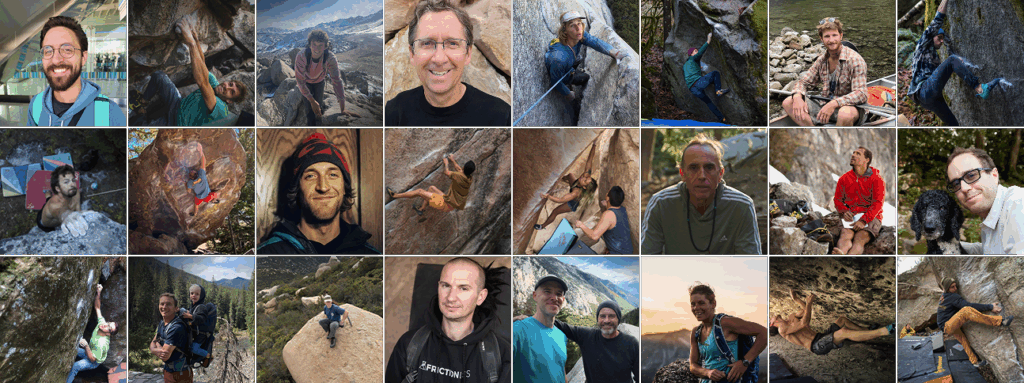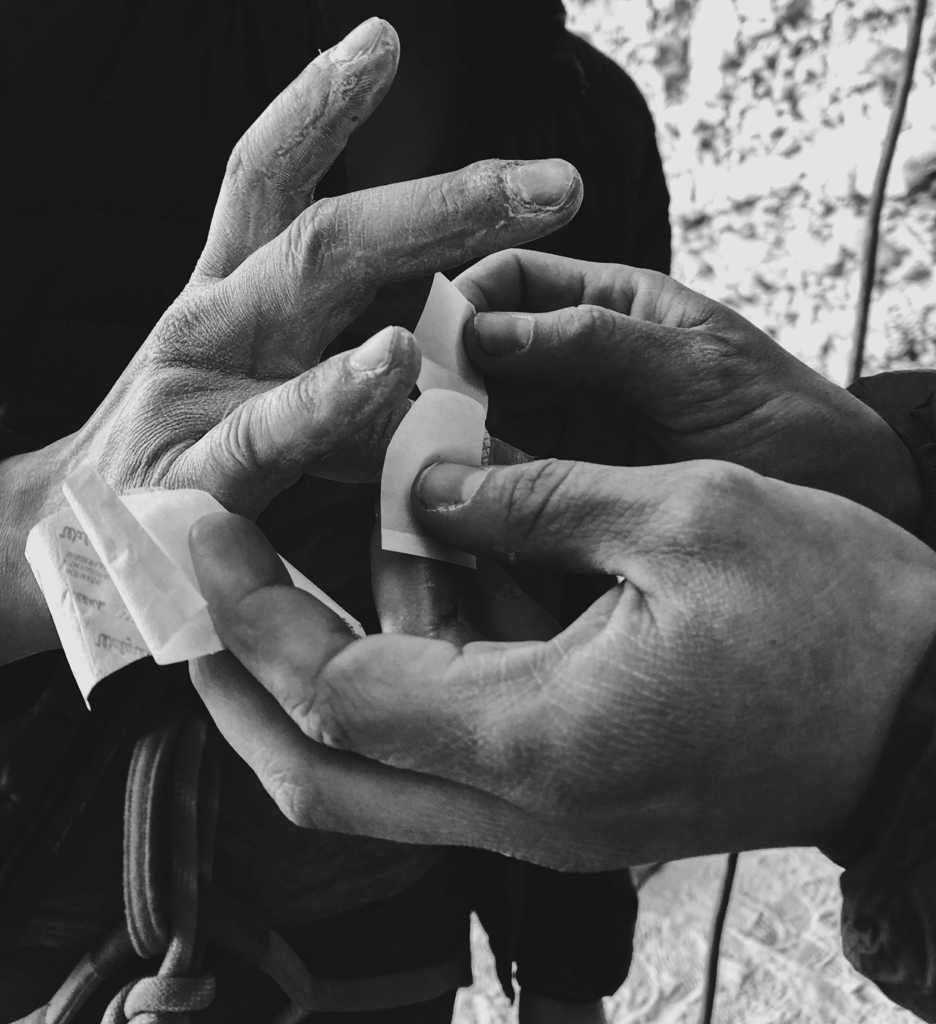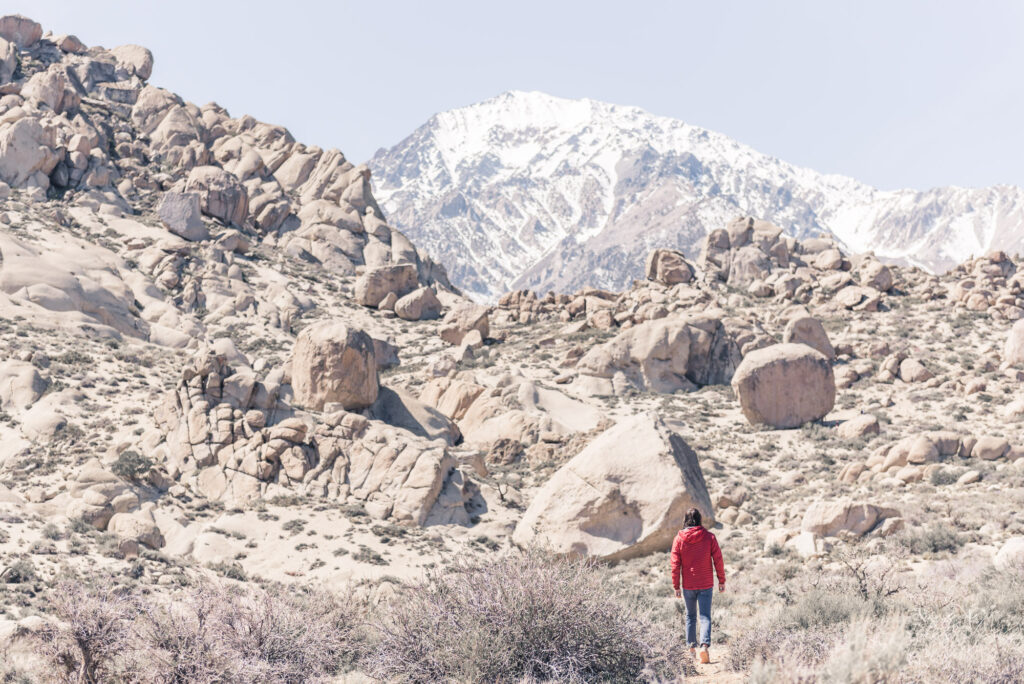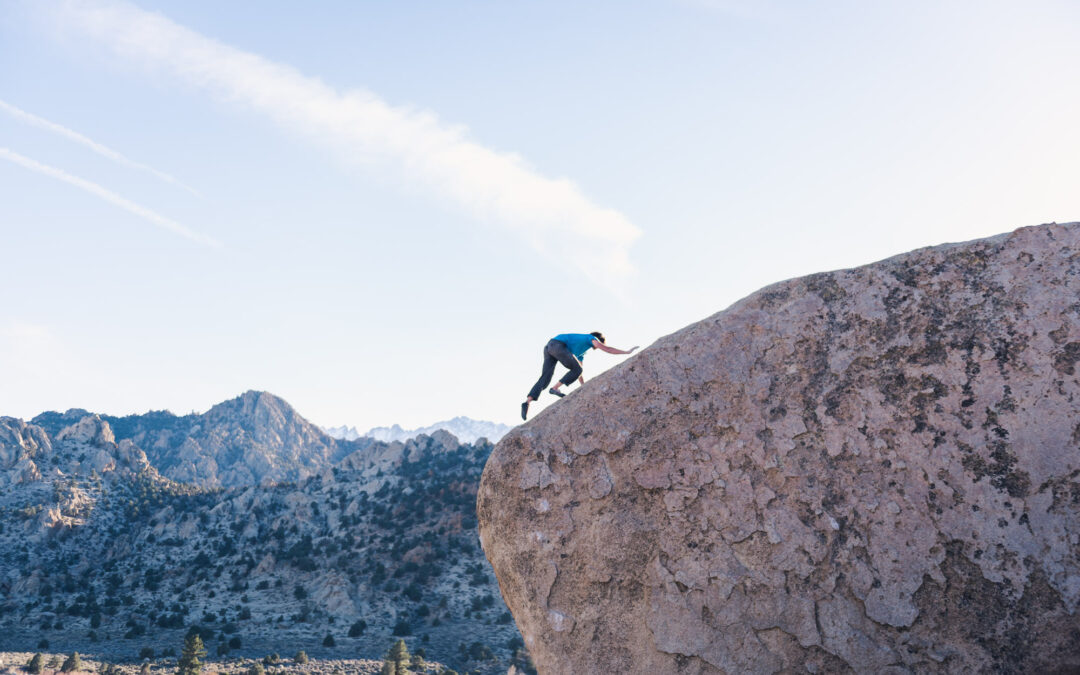Where we are today and how we got here
In recent months, it’s come into focus for our team just how disruptive KAYA (and digital products like it) can be to the current status-quo of climbing information sharing and guidebooks. We’ve been moving very quickly in the last few years, striving to build an awesome product and business that climbers value and respect. Now, we’d like to take a moment to share how we got to where we are now, and how we look towards the future.
As a new platform, the rules and standards are not pre-written for us. We’re giving our best effort to create a system that honors authors and developers, but also puts the power of data into the hands of the community. A system that increases the accessibility of outdoor climbing, while also providing education and resources to ensure sustainability and good etiquette… It’s not an easy thing to build, and there are many different opinions about what a “perfect” system should look like.
In this blog, we detail how KAYA works currently, what we’ve learned getting to where we are today, and what our vision for the future is.
First, let’s define some terminology so we’re all on the same page.
Glossary
UGC = User Generated Content. In our case, climb info submitted by climbers.
Author = A person who authors a guidebook, on KAYA or elsewhere. This person could be publishing a guide for the first time via KAYA, or they could be an existing print author. They are responsible for collecting and communicating a climbing area’s information into a distributable form.
Moderator = The moderator, at KAYA, is responsible for keeping watch over an existing data set, ensuring it stays up to date and is high quality. This can include adding problems, editing descriptions, and updated access information.
Contributor = An author, moderator, or user contributing data to KAYA
Verified = A climb, area, or destination is considered “Verified” on KAYA when all of the data is confirmed by an author or moderator to be clean and accurate. This means that name, grade, GPS, taxonomy, and description are all accurate.
Unverified = Unverified climbs or areas are areas with incomplete data, meaning the GPS may not yet be confirmed, it may be lacking a photo, or description.
Reference Data = Reference data is factual information about a climb or area. This includes things like name, grade, GPS, and First Ascent information. These are publicly recognized facts and are not copyrightable – they are part of the commons.
Copyright Data = Copyright data, in regard to guidebooks, is information such as written descriptions or photographs. This information can be subject to copyright law and is owned by its creator.
LCO = Local Climbing Organization. These non-profit organizations are generally volunteer run and work to protect one or more climbing areas within a region and the interests of the climbers. This work includes things such as trail maintenance, land management, bolt replacement, etc.
Our journey – since Sept 2022
Our initial vision for KAYA was to be the hub of all outdoor climbing data—never get lost again, and always have beta in your pocket. Our team of lifelong climbers grew up in an era where climbing information primarily existed in guidebooks or local knowledge with a growing desire for accessible information. At our core, we wanted to build something to help climbers find climb information at high fidelity and accuracy; however, it’s taken time for us to understand the complexities behind such an endeavor.
Since the inception of guidebooks in KAYA in September 2022, due to changes in leadership and overall learnings from community feedback, we’ve transformed our approach to building this product, dataset, and business. With David Gurman and Marc Bourguignon now co-leading since June 2024, we’ve anchored on the fact that guidebook authors are fundamental in sustaining the future of climbing – they are the ones who compile climbing information and history and share it with the broader community. If authors don’t have a digital platform to monetize their data, there’s little incentive for anyone to be an author and guidebooks (print & digital) would slowly disappear, shrinking the sphere of accurate climbing information. Guidebook authors are the cornerstone in compiling high-quality and comprehensive historical information.
Today, KAYA is a publishing platform for guidebook authors, that also enables climbers to log their ascents and contribute to the community through user-generated content. Platforms that are only user-generated often contain sparse or incorrect information. In contrast, platforms which solely host authored guides can quickly become outdated when new problems are established. By having both authors and UGC, we allow the guidebook author and the community to collaborate to present the best data set for climbing.
Initially, we visualized all UGC data flowing through KAYA without many guardrails. This was obviously problematic because without a dedicated author/moderator in place, it could lead to misinformation and access threats. Thanks to Access Fund’s advisory and community feedback in 2023, we only enable maps for areas with official guidebooks or an author/moderator in place. As such, we have since turned off mapping for ALL areas that do not have a moderator or author. While this may somewhat limit KAYA’s utility for some users submitting UGC, we hope it will be a driving force in helping establish responsible moderation in these areas, and we feel it is the best way to protect and sustain access.
We’ve learned a lot through building a digital guidebook publishing business. We recognize we’re a part of a significant change from a traditionally analog world. We understand behind every guidebook is an author, a source of income, and a community that may be impacted by what we’re building. Today, after 3 years of this work, we feel we are finally settling into a system that we believe in and hope the community does too. We designed our author terms to help climbing grow toward a sustainable future where both authors and climbing communities are supported. Our vision is still for KAYA to be the hub of all outdoor climbing data, built through collaborations with local authors and communities. Thank you to all those who care about the future of climbing and work to protect the areas and people that make it so special.
KAYA Author Terms & Data Protocol – 2025
Areas with Authors
Data
Only once an author has come onboard with a signed contract and given approval will we commence any work in displaying GPS maps & topos for the author’s in-app guide.
New Authors
We will always do our best in working with the most relevant author first; however, if the author is uninterested or unresponsive after good faith efforts, and other qualified authors express interest, we may move forward with those authors instead.
KAYA is a publisher, not an author
We will not publish guides as KAYA – climbers publish guides on KAYA.
User-generated Content
Data
Users are allowed to submit reference data to the system at any time and must confirm they do not use any copyrighted material.
In unmoderated, unverified destinations, we display user-submitted climb information in-app immediately in the climb list, though GPS maps remain off.
In verified destinations, user-submitted data is only visible once the author or moderator has approved and published it.
Moderation & Access
GPS maps & topos will only be enabled once the area is considered safe for access and an area moderator has been contracted. These unverified areas are open to application for authorship and moderation.
Author & Contributor Terms
Authors earn 50% of guide revenue
A minimum of 5% from each guide is contributed to local climbing organizations or Access Fund
Freedom to publish print books
Including data submitted to KAYA by the community
We gladly export data in service of and promote the sale of print guides from any of our authors
Option to publish on competing apps
Authors have the right to pull their copyrighted data
This includes descriptions, photos, & area info
How we work with authors

With apps like KAYA, making a guidebook is faster and easier than ever before which begs the question:
Who is qualified to be a guidebook author?
Legally speaking, anyone can write a guidebook. There have been numerous examples, even before guides went digital, of unqualified climbers authoring a guidebook to an area where they are not an expert. This was typically done in search of a quick buck, and the history of guides being “ripped off” by other authors is extensive. Historically, this has been sorted out by the community. Generally, the unqualified author’s work is inferior to that of the more seasoned local developer or author who has spent more time in the area, contributed more to its scene, and more thoroughly researched it. The author with the best information and reputation tends to be the most successful and respected.
It isn’t in our interest to work with an unqualified author/moderator. Working with someone who isn’t deeply knowledgeable and committed to the area results in worse guides and worse user experiences.
We always aim to work with the most qualified climber possible. In many cases, that is the existing print author, who we will always try to offer the first opportunity to publish on KAYA. Sometimes, however, they’ve moved or climbing has taken a backseat in their life and someone more actively engaged may be a better documentarian and advocate for the area. A nice balance we’ve struck in a number of areas is having an existing print author take the role of “Author” and having a psyched, engaged developer act as “Moderator.” This way, the history is honored and the new additions and changes are continuously updated.
If the author is unresponsive, disinterested, or we can’t connect with them, and another qualified, credible climber wants to publish a guide for the zone, we’ll do our best to vet their qualifications. An ideal author has a long personal history with the area, thorough understanding of the climbs and their development, concern for access and sustainability, a deep community connection, and is excited about our mission.
KAYA does NOT publish verified guides unless a credible author has signed a contract.
We also recognize that not every single crag needs a published guide, and will defer to LCOs if they prefer areas not to be published on the platform. In some cases, such as Holy Boulders in Illinois, authored by the Illinois Climbers Association, LCOs can act as the author and will receive the 50% revenue share. In other instances, such as with the Western Massachusetts Climber Coalition, the LCO will take on the role of moderator and be given access to the back-end so they can update access information at a moment’s notice. We will gladly welcome any LCO into this role! We’re proud to have collaborated through donations, joint event hosting, co-marketing, and sponsorships with over 35 local climbing organizations in North America.
In 2022/23 many different strategies for bringing on authors and data were attempted. Through those trials and with feedback from the community, authors, friends, and adversaries, our current process really took shape in 2024 and 2025
Missteps & learnings

As a small team with big goals and changing leadership, we’ve been continuously transforming our data collection approach. Although we’ve always tried to prioritize working with original authors and where the majority of our 80+ authors and 115 guides have had positive experiences, there are a handful of occasions where we attempted data collection strategies and experiments that, while legal, created negative perceptions amongst some authors and communities. We regret those actions and have apologized to the people affected. In 3 instances, we collected and visualized data in KAYA before authors had signed contracts. These areas are in Maryland, the Southeast, and Yosemite.
In each of those instances, we were reacting to the main bottleneck for existing authors wishing to publish their guide data on KAYA: on-the-ground collection of GPS, trail data, and photographs. In some cases, we’ve helped authors with this time consuming part of the digital guidebook creation process. In the interest of moving quickly and easing the workload for authors, our team collected the “reference data” and photos in advance of a signed contract, in the hopes of expediting the process. The idea was to spool up much of the time-consuming data work ahead of time, so that when an author we’ve been in discussion with signed their contract and merged in their written data, we could quickly publish their guide.
We should not have visualized this data in KAYA without authors first signing official contracts. At the time, our thinking was, “GPS points and photos will enhance climbers’ experience at the crag. Since this doesn’t include the written details that make a guidebook richly unique, it isn’t a guidebook—just reference data.”
At the time, it seemed harmless, but when the very same authors we were interested in working with saw this data visualized in KAYA, they understandably felt that KAYA was in the process of assembling its own guide as a competitive product. This was a mistake and we no longer visualize data we collect before we have an official contract established with an author. These three experiences have shaped our data and author ethos as it is today, listed above.
Maryland:
In 2023, an employee collected data at Rock State Park and North West Branch as discussions were underway between our former CEO and their publisher regarding a data partnership. He collected GPS pins and photos, cross-referencing all available resources to ensure a complete climb list, including existing guidebooks. After importing this data, under the former CEO’s directive, he published it visibly in the app. None of this was communicated to any of the four existing authors for Rocks State Park and North West Branch. The authors saw the data published in KAYA, and believed we had built a competitive guide. This perception, understandably, dissolved the trust between our organizations.
Additionally, in a Facebook post addressing this issue, the KAYA employee who had collected the data responded inappropriately from their personal account, further contributing to the tensions. We apologize for this behavior, and have addressed this concern privately with the employee. We’d like to thank these authors and their publisher for taking the time and energy to meet with us and our former CEO in October, 2023 where we apologized directly. They brought forth two legitimate complaints about our product at the time:
1. Having maps enabled by default for unmoderated, user-generated content could potentially lead to access concerns.
We were already in the process of addressing these concerns with the help of Access Fund, however we appreciated the feedback and it inspired us to move more rapidly. We disabled maps by default for areas which did not have an author or moderator in-place, and began a thorough process with Access Fund and many LCOs to audit all of the areas in KAYA and update them with appropriate messaging regarding the accessibility of each crag.
2. Some inappropriate or offensive climb names appeared uncensored in KAYA.
While we’d already done a manual sweep for inappropriate names in-app and had the built the option for users to report names, we did not have an auto-censoring system in place. Thanks in part to the feedback from Dana in this meeting, we built an auto-censor system. Still some names inevitably get through. If you do find inappropriate names in KAYA, please report them.
Following our meeting, we disabled the areas in question and our former CEO made an apology in the Climb Maryland Facebook group. Over a year later, we partnered with a local developer to properly publish a guide to Rock State Park. Northwest Branch remains an unverified destination at this time, and we have disabled maps until we’ve established a contract with a local author.
Additionally, we have formed a positive relationship with the Mid-Atlantic Climbers, who actively moderate all Maryland guides in KAYA and receive 50% of the revenue. The authors publishing in KAYA have elected to divert their revenue to supporting MAC.
We regret the way our relationship with the authors and their publisher was impacted, and appreciate their product feedback. Our leadership and practices have since changed and we now ensure we solidify clear partnerships before visualizing any data in KAYA.
Yosemite:
Conversations about publishing the most recent print Yosemite bouldering guidebook on KAYA began in 2023 after two of the Yosemite co-authors launched their Golden State guidebook on KAYA. In a meeting, one of the authors expressed interest in moderating the data and one of the other authors said privately that they’d be open to working with us if their co-authors also agreed. We hoped this would be the case. Separately, another highly qualified potential author also expressed interest in publishing a Yosemite bouldering guide on KAYA.
In advance of a partnership with one of the potential authors, we collected and organized GPS data, photos, names and grades, to expedite the authors’ eventual publishing. As we organized the data, we visualized it in KAYA. This was a crucial mistake as, understandably, the authors perceived the visualization of reference data as KAYA creating a competing guide. Mutual friends brought this to our attention, and we disabled the map for Yosemite. We then met privately with one of the print authors and offered our apologies.
Hospital Boulders:
In 2021 and 2022, KAYA partnered with the Southeast Climbers Coalition to be the digital scorekeeper for their Hospital Boulders fundraiser bouldering competition: The Sickness. To facilitate this, the SCC shared the comp guidebook with KAYA, and we imported the names and grades into the app on behalf of the SCC. The event was a success and both KAYA and SCC were happy with the result.
In advance of the comp in 2023, we decided to improve the guide by adding GPS, photos, and the comp guide descriptions. We then met a community member who informed us that he was in fact the author, not the SCC. Realizing our mistake, we offered this author the opportunity to come on as author and retroactive revenue payments accrued by the guide since its launch. While we were waiting to hear from them, we kept the guide live KAYA. In retrospect, we should have removed the guide from KAYA until we had officially made an agreement with the author. We very much respect this author’s contributions, and believe he should get the credit he deserves. We have since disabled this guide, the discussion with the author and SCC is ongoing, and it will not be published without a signed author contract.
The above experiences have been critical in shaping our data protocol and our ethos of working with good people in a respectable relationship with solid transparency and communication.
Moving forward

Phew! That should be all of our dirty laundry, aired and fluffed.
We hope that by speaking transparently we can add some clarity and visibility into the missteps and miscommunications that have surrounded these regions and how we’ve learned from such experiences to shape our data & author ethos today.
We look forward to collaborating with local climbers, guidebook authors and access organizations to provide climbers with the most comprehensive and high-quality information responsibly and respectfully.
As always, we are all ears to feedback, criticism, and questions about any of this. Drop us a line at support@kayaclimb.com and we will get back to you as promptly as we can. We also plan to post this to Reddit for a community discussion.
Thank you for reading about our journey and our learnings that shaped our data & author ethos. We look forward to continuing to build KAYA as a positive platform for climbers, guidebook authors, gyms, and LCOs.
With Love for Climbing,
Team KAYA
Fact checks
There are a few proven false claims or unfounded gossip we’ve heard through the grapevine. Below we set the record straight.
A Chattanooga area was not closed by KAYA
It was falsely claimed that KAYA created an access issue which led to the closure of an area in Chattanooga. In reality, land owners temporarily closed the area due to repeated parking infractions by climbers—a situation that has occurred 2–3 times in the past. KAYA has never published a guide or provided GPS maps for this area, and the Southeastern Climbers Coalition has confirmed that KAYA had nothing to do with its closure.
The Rock Shop guide was not plagiarized
In 2023, the existing print guidebook author for Rock Shop reached out to KAYA to discuss his interest in publishing their Unaweep guide on our platform. After discussing the terms and contract, this author ultimately decided he did not want to work with KAYA, and shared that he was not interested in working with KAYA for the next several years. After the Unaweep contract fell through, friends of KAYA confirmed that this author was still not interested in working with us. For these reasons, we did not consider them to author a Rock Shop guidebook.
After another qualified author had completed a guide to Rock Shop, this author expressed frustrations that we had not contacted him and claimed that the guide was plagiaristic. These allegations are false.
We are proud of and committed to Matt DeSantis’ excellent Rock Shop guide.
Moe’s Valley was not compiled by the KAYA team in a weekend
The story that KAYA went as a team and assembled the guide in a weekend is incorrect. In 2023, after failing to reach the most recent print author and learning he no longer lived in the area, John Oungst—who has deep personal experience climbing in Moe’s Valley—decided to author a guide to serve the community. John created this guide on his personal time, across several months and many trips to the area. He built the guide like all other authors who create guides where preexisting works predate– drawing on his own knowledge, the knowledge of developers and climbers he spoke with in the area, and yes, referencing existing materials such as the existing print guidebook and a multitude of other resources. John, in many cases, improved upon the quality of the available reference data, correcting errors and adding numerous problems which were previously undocumented elsewhere.
John has been an excellent community representative, tabling at SUCA’s event in 2023 and continuously updating the access status of the area to promote the “Save Moe’s Valley” campaign. Additionally, KAYA supported SUCA’s Moe’s Valley Festival in 2023 and 2024 and plans to do the same this year by offering free access to the resource for all participants. Lastly, Casey Webb, a longtime St. George developer and local, has since joined as co-author of the guide. We are thrilled to have a local with a rich history onboard to collaborate with John.
The Joe’s Valley author was paid, and on time
In September 2022, Joe’s Valley was the very first guidebook published on KAYA. Initially, there was miscommunication with the designer and marketing team and we launched the guide on Instagram omitting the author’s name. This was a mistake which we promptly corrected within hours.
Following the launch, we also highlighted the author as one of “Joe’s Valley’s Heroes”
The claims that we did not pay the author, or did not pay him on time are false.
Building Together
We appreciate those who took a chance on us to create something positive and meaningful for climbers. If you’re our biggest fan or our biggest hater, we appreciate you and your feedback. We approach this journey like we do our mega projects, keeping our minds open with learning and progression as our goal. We believe in building a system where local authors are financially supported and incentivized to continue sharing information, where local climbing organizations are supported to take care of the places we play and love, and where climbers are educated to minimize their impact while enjoying memorable experiences together moving on stone.
Please check out some stories and highlights celebrating authors below!

